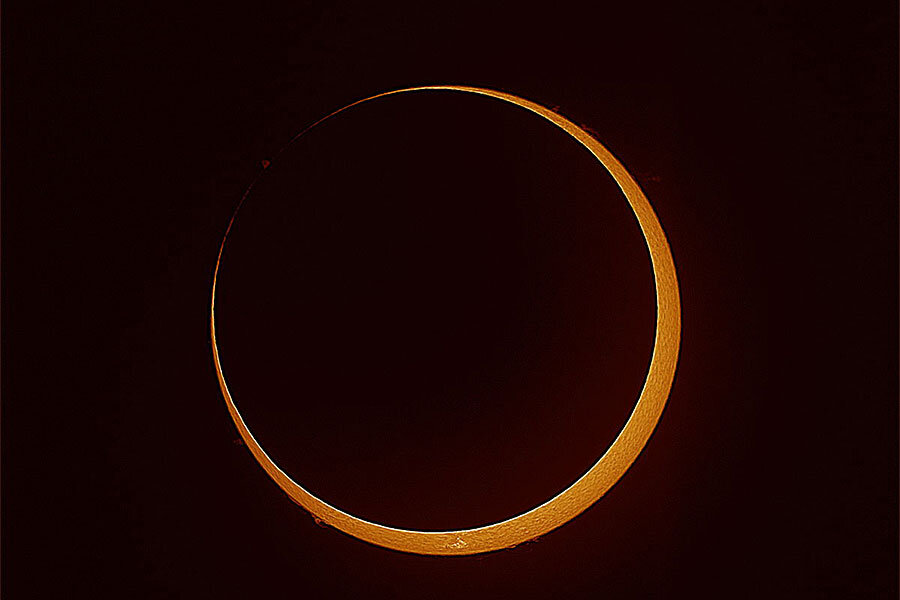Miss the ‘ring of fire’ eclipse? Mark your calendar for the next cosmic light show
Loading...
An annular solar eclipse dazzled the sky above south-central Africa and parts of the Indian Ocean on September 1, a phenomenon observed by eclipse chasers around the globe, many of whom captured it in stunning images.
Also called a "ring of fire," the annular eclipse occurs when the moon is at a far point from Earth in its elliptical orbit. During these times, when the moon crosses between the Earth and the sun, its smaller size, in relation to its distance from Earth, doesn't quite black out the star, as it does during a total solar eclipse. This leaves a thin orange ring of sunlight peeking out from the edge of the moon.
For those who missed the September 1 event, there will be more opportunities to observe the cosmic light dance in the near future. There is one annular eclipse and one total solar eclipse somewhere on Earth every 18 months, as Space.com reports. The next annular eclipse will be in February 2017.
For those in North America, August 21, 2017, will be a momentous date, bringing a total solar eclipse that will be visible from coast to coast, though only in its partial eclipse phase in some regions. While solar eclipses come every 18 months, there hasn't been one in the contiguous United States since February 26, 1979.
“The path of totality is about 70 miles wide and stretches across 14 states, beginning with Oregon and ending with South Carolina. If you're anywhere along the center line of the eclipse, you'll see at least 2 minutes of totality,” reports Sky & Telescope in preparation for next year’s total solar eclipse.
Last week’s annular eclipse resulted in another astronomical treat. NASA’s Solar Dynamics Observatory (SDO), a spacecraft launched in 2010 to observe and study the sun, captured both Earth and the moon crossing in front of the sun.
“On Sept. 1, Earth completely eclipsed the sun from SDO’s perspective just as the moon began its journey across the face of the sun,” NASA reported online. “The end of the Earth eclipse happened just in time for SDO to catch the final stages of the lunar transit.”
In SDO’s video, the Earth reveals itself by its fuzzy edges, while the moon’s are crisp and sharp. The reason the edges appear differently, NASA reports online, is that Earth’s atmosphere absorbs some of the light from the sun, creating the murky edge. Because the moon has no atmosphere, it produces a sharp horizon.
So why don’t solar eclipses happen every month, or every time the moon passes between the Earth and sun? It’s because the moon's orbit around the Earth is not perfectly circular, but rather elliptical, and tilted about 5 degrees in relation to the Earth's orbit around the sun, reports Space.com.
“When the moon's shadow crosses the sun but its center doesn't align exactly with the center of the sun, it's known as a partial solar eclipse — when the moon sits either a little too high or too low to totally cover the sun,” writes Lauren L'Amie on Space.com.
Stargazers don’t have to wait for next year to see an eclipse, though. On September 16, the moon will get darker because Earth will pass between it and the sun in what is known as a lunar eclipse. But, as Sky & Telescope reports, this one will be hard to see. Those in Europe, Africa, and Asia will see a slight darkening of the Moon's northern half.








